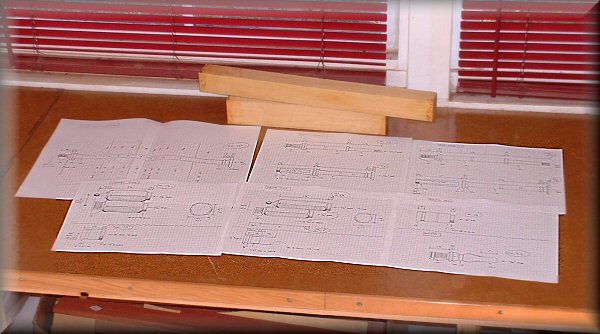
(16 Sept) I've spent the past week doing the design and drawings. I like to do full-scale drawings of everything before i start; this helps me to visualize how all the parts relate to each other, and gets me thinking about how exactly to approach the construction.
These pipes will be made of "yellowheart," with brass and fake ivory trim. I've used this wood for other projects in the past, but i've not turned it before. I do know of at least one recorder maker who uses it, so it should be quite nice for bagpipes as well. The colour should give it kind of an old-world charm, appropriate for this particular instrument.
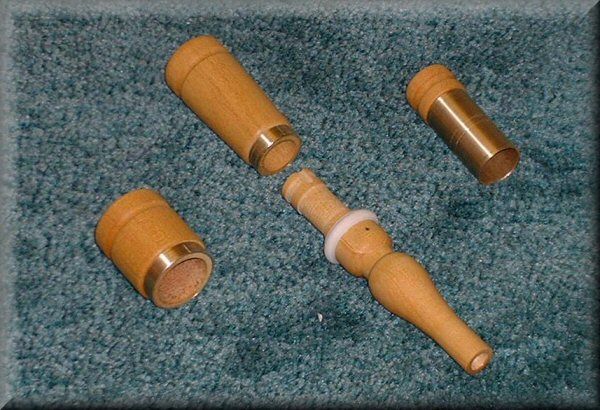
(20 Sept) These are the easy bits, made first so i can get used to working with this wood. I quite like the look of it, but it's pretty strange to turn - it comes out very powdery and takes some sanding to clean up. Fortunately it does clean up nicely with not too much work. (Maybe i'm just spoiled by the mopane i used for the last project.) It'll be interesting to see what kind of finish the gundrill leaves in the chanter bores.
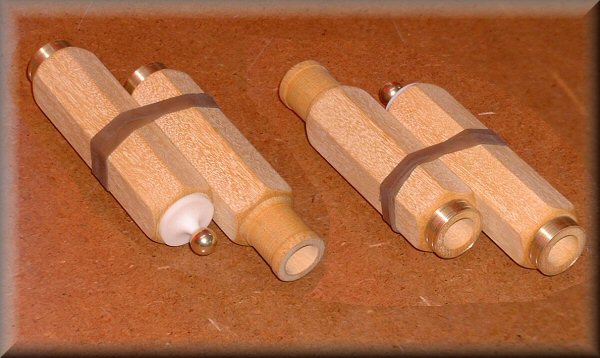
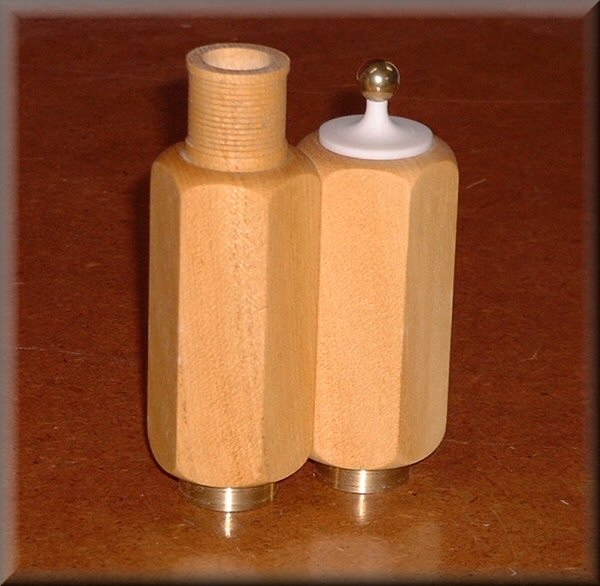
(30 Sept) Here, as promised, is the double chanter stock, ready for polishing and assembly. My original plan was to make this in a single piece with two sockets, as found on the French Cornemuse du Centre, for instance. While i was figuring out how to do that, it occurred to me that the logical thing to do would instead be to make this part to match the double drone stock.
My home-built milling attachment for the lathe makes it fairly straightforward to do the hexagonal shape: the piece is turned round, then each of the six faces machined identically away.
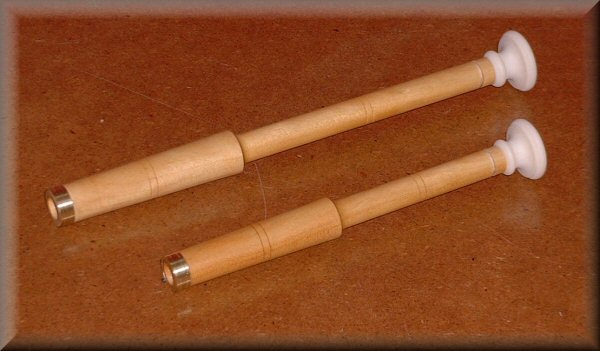
(2 Oct) Here are the drones' tuning joints. This project will be my first time making wood-inside-wood tuning slides, instead of using brass sleeves for the slides. It seemed more in keeping with the old-world theme of the instrument.
There's a groove near each bell to take a fine brass chain, which will hold two stoppers: one for the end of the drone, and one to close/open a hole to play the drone a tone higher. (I just can't give up the flexibility of the retunable drones - they're too much fun not to have.)
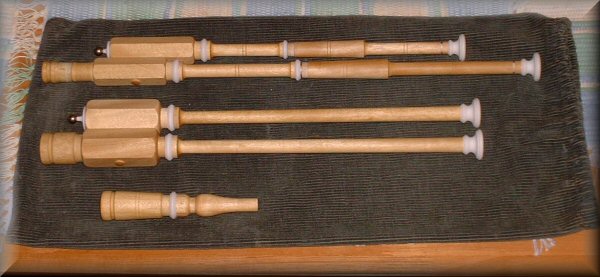
(11 Oct) All the major construction is done! Still to go are the fingerholes & tuning, polishing, reeds, and a bag of course.
You can see a small "button" on one face of each double stock. I realized i would always be worrying about the glue joints in the stocks coming apart, so i decided to screw them together as well. I always seem to "overbuild" just a little, but i figure it's better than having something break somewhere down the line. The wood buttons are just plugs for the holes where the screwdriver goes.
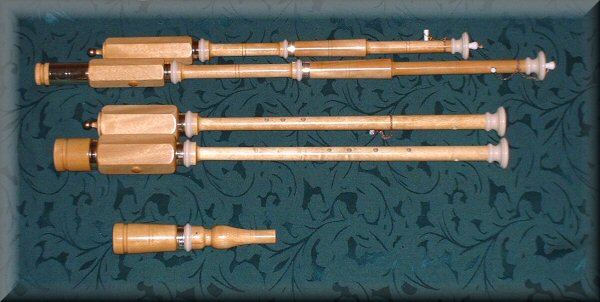
(16 Oct) Here it is with the fingerholes drilled, all the wood and metalwork finished and polished, and the stoppers and chains in place. (You can see there's a stopper for one hole on the back of the upper chanter - that's to change the drone note to play in the minor mode.)
Final steps will be the bag and then reedmaking. The bag cover will be made of this nice dark green brocade.
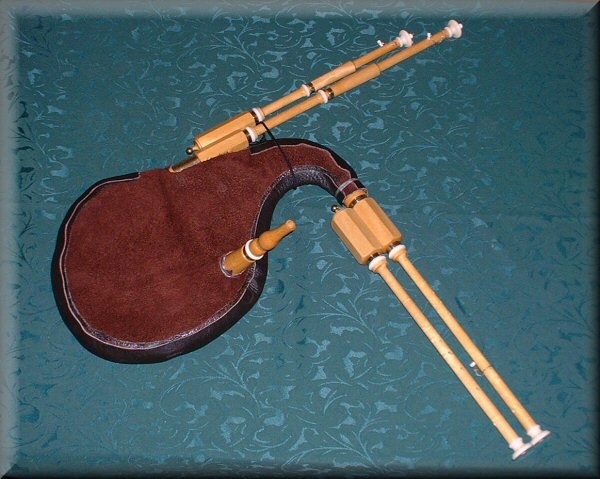
(30 Oct) I've glued up a bag, and got everything tied in. The bag is fairly small, about 11" round, and recalls the many early bagpipe illustrations from Brueghel, Bosch & many many others. It's very different than any bag i've ever played, but so far it seems quite comfortable.
Next up is a pair of chanter reeds, and we can see if this thing will play properly. There might be a very good reason why we don't see more double-chanter bagpipes, and i'm here to find out.
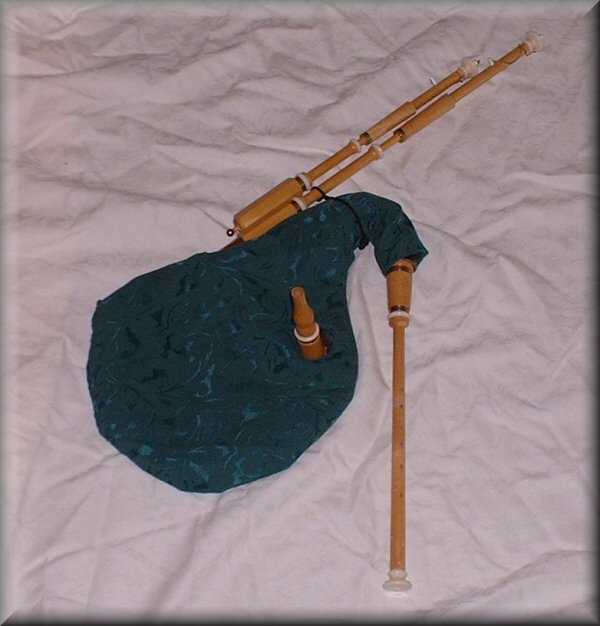
(Dec) Ok, so the double-chanter didn't work so well. I had to make and re-make the chanter stock to keep the reeds from interfering with each other. Even then, the result wasn't as interesting or useful as i'd imagined. It would make a good conversation piece, but not something that would find much (or any) use in the music i play. Nothing ventured, nothing gained - it was an experiment that needed doing.
Anyway, i made up a single chanter in C, and i'm pleased as punch with it.